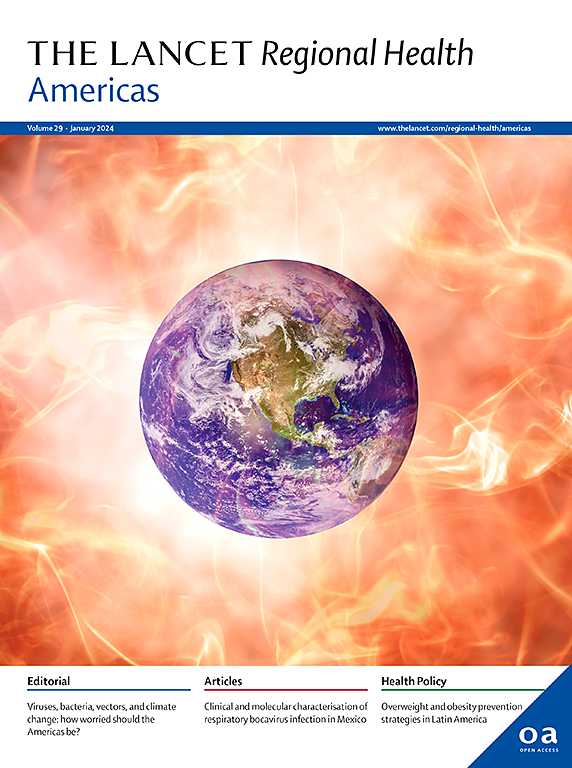量化医疗补助工作要求对死亡率和发病率的影响:一项模型研究
IF 7
Q1 HEALTH CARE SCIENCES & SERVICES
引用次数: 0
摘要
联邦医疗补助工作要求,最近在国家立法下颁布,预计将导致低收入成年人大量退出。然而,这些政策的公共卫生后果仍然难以量化。方法扩展我们先前开发的模型框架,我们预测了国家和州一级的超额死亡率和不受控制的发病率,这些死亡率和发病率可归因于扩大参保者医疗补助覆盖范围的损失。我们的三种保险损失情景是基于国会预算办公室的预测和在阿肯色州和新罕布什尔州观察到的退出模式。我们在自动豁免能力和报告合规方面纳入了行政变更。死亡率估计使用了比较有保险和没有保险的成年人的风险比,而发病率估计集中在未控制的糖尿病、高血压和高胆固醇。研究结果:我们估计,在这三种情况下,每年的额外死亡人数在7049至9252人之间。我们还预计会有多达113,607例未控制的糖尿病,135,135例高血压和37,800例高胆固醇。州一级的超额死亡人数从不足20人到超过2 100人不等,哥伦比亚特区以及纽约和新墨西哥等州的人均死亡率最高。国家绩效因行政能力的不同而有很大差异。例如,通过更强有力的豁免制度,北卡罗来纳州和罗德岛州可以避免90%以上的死亡,而宾夕法尼亚州和南达科他州可能只能避免不到30%的死亡。医疗补助工作要求预计会增加美国各地的死亡率和慢性病负担。这些发现突出了国家行政能力的作用,并强调了限制获得保险的公共卫生成本。资助诺瑟姆金沙基金会。本文章由计算机程序翻译,如有差异,请以英文原文为准。
Quantifying the mortality and morbidity impact of medicaid work requirements: a modeling study
Background
Federal Medicaid work requirements, recently enacted under national legislation, are expected to cause substantial disenrollment among low-income adults. However, the public health consequences of these policies remain poorly quantified.
Methods
Extending our previously developed modeling framework, we projected national and state-level excess mortality and uncontrolled morbidity attributable to Medicaid coverage loss among expansion enrollees. Our three coverage loss scenarios were based on Congressional Budget Office projections and disenrollment patterns observed in Arkansas and New Hampshire. We incorporated administrative variation in automatic exemption capacity and reporting compliance. Mortality estimates used hazard ratios comparing insured and uninsured adults, while morbidity estimates focused on uncontrolled diabetes, hypertension, and high cholesterol.
Findings
We estimate between 7049 and 9252 excess deaths annually under the three national scenarios. We also project up to 113,607 additional cases of uncontrolled diabetes, 135,135 of hypertension, and 37,800 of high cholesterol. State-level excess deaths range from under 20 to over 2,100, with per-capita mortality highest in the District of Columbia and states such as New York and New Mexico. State performance varies widely based on administrative capacity. For example, North Carolina and Rhode Island would avert over 90 percent of deaths that could be avoided through stronger exemption systems, while Pennsylvania and South Dakota may only avert fewer than 30 percent.
Interpretation
Medicaid work requirements are projected to increase mortality and chronic disease burden across the United States. These findings highlight the role of state administrative capacity and underscore the public health cost of restricting insurance access.
Funding
Notsew Orm Sands Foundation.
求助全文
通过发布文献求助,成功后即可免费获取论文全文。
去求助
来源期刊

Lancet Regional Health-Americas
Multiple-
CiteScore
8.00
自引率
0.00%
发文量
0
期刊介绍:
The Lancet Regional Health – Americas, an open-access journal, contributes to The Lancet's global initiative by focusing on health-care quality and access in the Americas. It aims to advance clinical practice and health policy in the region, promoting better health outcomes. The journal publishes high-quality original research advocating change or shedding light on clinical practice and health policy. It welcomes submissions on various regional health topics, including infectious diseases, non-communicable diseases, child and adolescent health, maternal and reproductive health, emergency care, health policy, and health equity.
 求助内容:
求助内容: 应助结果提醒方式:
应助结果提醒方式:


